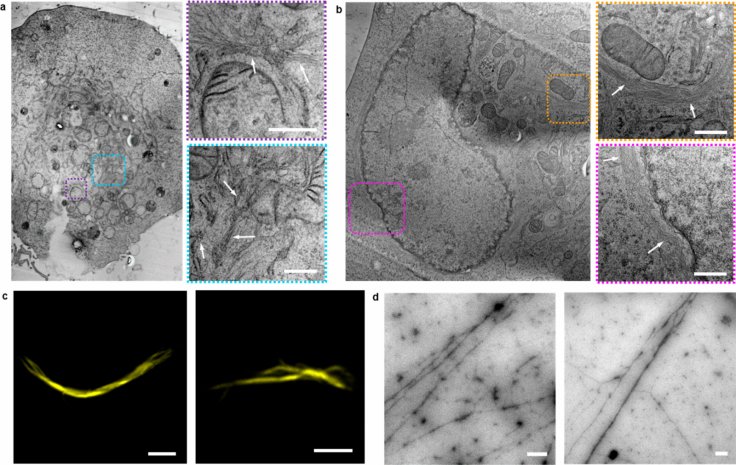Currently, the best weapons against cancer are radiation and chemotherapy. But scientists have found a new way to kill the cancer cells while ensuring that the healthy cells are not affected due to the treatment.
A team of researchers at the Max Planck Institute has shown a new process to fight cancer by introducing molecular fibers into cells. As per their new finding, once these fibers encounter the specific environment of cancer cells, they eventually assemble into webs and activate the tumor's self-destructive sequence.
Unlike chemotherapy and radiation, which act like a shotgun blast than a sniper shot, harming healthy cells in the body leaving behind side effects to a patient's health, the new technique is claimed to be harmless to healthy cells.
To find an alternative treatment for cancer, researches have long been looking for ways to specifically target tumors without harming the healthy cells around them, and to do that they need to take the advantage of the unique environment inside cancer cells. In this new study by the Max Planck Institute, scientists have tried to do that.

A Whole New Path to Fight Against Cancer
David Ng, lead researcher on the study which was published in the Journal of the American Chemical Society said that in the cancer tissue, the environment is much more acidic than in healthy tissue. "Much more highly reactive oxidative molecules are found within the cancer cells due to cancer's increased metabolic activity - and we take advantage of that," said the researcher.
The team of scientists developed molecular fibers that would theoretically be introduced to a patient's body while entering into both cancerous and healthy cells. As per the study, these fibers are created using sequences of peptides that split and connect in different patterns based on the environment they are facing.
The fibers turn lethal when they come close to the features that mark cancer tissue—acidity and more reactive oxidative molecules—while being harmless to healthy cells. Once exposed to those features, the fibers join together and create a structure that resembles a web that grows inside the cancer cell itself. As per the researchers, these webs are stable and can physically deform the cell to the point where they trigger programmed self-destruction.

According to the study, this process leaves healthy cells alone and only attacks cancer cells in such a way that they become defenseless. The researchers also said that the method also bypasses a common problem with chemical attacks against which many tumors develop resistance.
The more surprising feature of this groundbreaking study is that during tests on lab cultures of cancer cells, scientists found that this new method of cancer treatment was able to kill tumors within four hours.
However, it is still in an early stage of research to establish a conclusive result, as scientists need to test the method on animals and then on humans. Meanwhile, the researchers are trying to develop a way to degrade the webs after the death of cancer cells.









